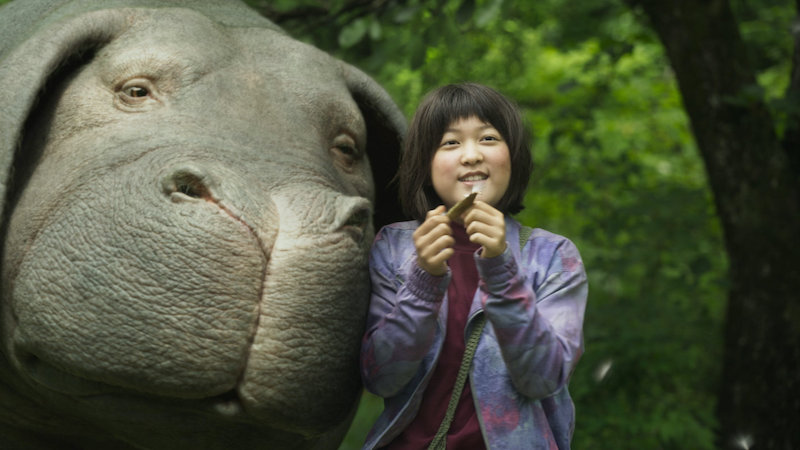Stories for Earth relies on contributions from our listeners and readers to produce high quality, in-depth content. If you buy something using the links on our website, we may earn a small commission, at no extra cost to you. For more information, see our Affiliate Disclosure.
Okja is a 2017 film from South Korean filmmaker Bong Joon Ho. The film premiered at the 2017 Cannes Film Festival, where it received a four-minute standing ovation. It was later released on Netflix on June 28, 2017.
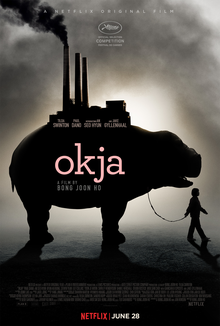
Okja tells the story of Mija, a young girl from South Korea, who raises a genetically modified pig named Okja on her grandfather’s small farm in South Korea. After the evil Mirando Corporation takes Okja to be slaughtered in America, Mija embarks on an epic quest to save Okja and return her to the farm in South Korea.
Never miss an episode
Subscribe wherever you enjoy podcasts:
Jump to
About the creator
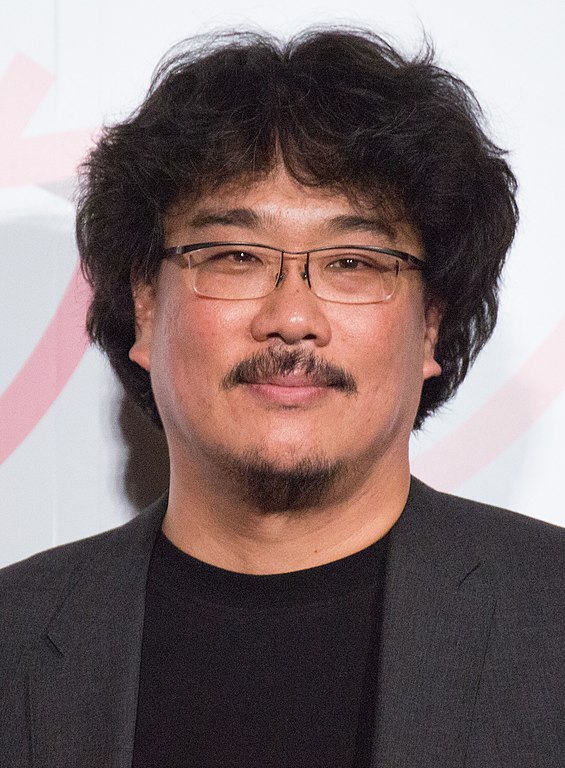
Bong Joon Ho is a filmmaker from South Korea known for films like Parasite and Snowpiercer. Born in Daegu, South Korea in 1969, Bong attended the Korean Academy of Film Arts at Yonsei University, graduating in 1995. After working on other projects for several years, Bong Joon Ho released his directorial debut, Memories of Murder, in 2003. Since then, he has created some of the most successful films in South Korea and has been named one of the greatest film directors of the 21st century by Metacritic.
Transcript
I’m Forrest Brown, and you’re listening to Stories for Earth.
[music: “Cold Descent” by Forrest Brown]
Welcome to Stories for Earth, a podcast about everything climate change in pop culture. Today, we’ll be talking about the 2017 film Okja, a Netflix-exclusive movie from the creator of Parasite and Snowpiercer, South Korean filmmaker Bong Joon Ho.
In our last episode, we talked about US poet laureate Joy Harjo and about the importance of rekindling our relationship with the land and restoring rights to indigenous people. These are important steps the world needs to take, both from a social justice and environmental perspective, and today, we’ll be diving a little bit deeper into some of the ways we can restore our bond with the Earth.
If you like what you hear today, please consider supporting us on Patreon. I say “us,” but Stories for Earth is a one-man show, and I currently cover all the costs of producing the show and maintaining the website out of pocket. You can become a patron at patreon.com/storiesforearth to make a recurring, monthly donation, or you can go to the “Support us” page on our website at storiesforearth.com/support-us/ for other ways to help keep the show going. Again, those links are patreon.com/storiesforearth for Patreon and storiesforearth.com/support-us/ for other ways to contribute. We’re also on Instagram and Twitter if you want to keep up with us on social media.
This is a really hard time for everyone, so please only donate if you’re in a position to do so. I certainly appreciate any way you’re able to support the show. And speaking of the show, let’s get to it. I hope you enjoy.
“Okja” isn’t trying to convince you to go vegan
I was first seriously introduced to the idea of veganism several years ago. And before I go any further, here’s a disclaimer: this episode is not about veganism. Anyway, I had a car back then, and I had accidentally run over a nail, which was kind enough to stick around in my tire. Bored, sitting in the waiting room at the mechanic, I downloaded an ebook copy of Eating Animals by Jonathan Safran Foer on a whim. I don’t remember how long I sat there, but I read a sizable chunk of Eating Animals that day, and what I read disturbed me.
Startling statistics about the amount of carbon dioxide and methane that comes from beef production. Convincing arguments about the ethicality of killing another intelligent form of life for no real reason other than taste preference. The fact that pigs are smarter than dogs. Glimpses inside factory farms where the author actually broke into farms at night with animal rights activists. Crazy stuff.
Prior to this I had experimented with going vegetarian. Not for any environmentally or ethically motivated reasons—I was a broke college student, and meat is expensive. But after reading part of Eating Animals, I was ready to go vegan for what you might call the right reasons. And I tried to, multiple times! Perhaps it was a lack of cooking know-how, time, creativity, or money, but by the time I graduated from college, I had been a vegan at least several times, resigning myself to failure by the time I had my diploma in hand.
I don’t follow any kind of strict diet now, though I do eat far less meat and dairy products than I once did. But recently watching the movie Okja from South Korean director Bong Joon-ho made me seriously think about going vegan again.
“Okja” plot summary
Okja is the story of a young girl from South Korea named Mija. Mija lives in the countryside of South Korea with her grandfather and her pet pig named Okja. Except, Okja isn’t any normal pig. Unlike past pig-flicks that feature porkers who herd sheep, talk to spiders, or predict the future, Okja is special for being genetically modified and enormous.
In fact, Okja isn’t really a pig—she’s a creation of the Mirando Corporation, a giant agrochemical company based in New York City. If you already noticed how similar its name sounds to Monsanto, you might have an idea of where this is going. Mirando created a bunch of animals like Okja and sent them to small, family farms all over the world to be raised. This was somewhat of a beta test to see how the animals would fare, and at the end of several years, Mirando would send a company representative to each of the farms to check in on the animals. The biggest, healthiest animal would win, and it would be taken back to New York City as part of a parade Mirando would throw to make the announcement.
Mija and her grandfather’s farm was one of the ones to receive an animal from Mirando. Once the animals were mature, the company representative—played by Jake Gyllenhaal—visited every farm. When he got to Okja, he was blown away and declared her the winner. But Mija didn’t know this meant Okja had to leave. Without her knowing, her grandfather arranged for Mirando to take Okja back, paying him a nice sum of money for raising such a fine animal. Worst of all, Okja would be turned into GMO bacon.
Once Mija realizes what her grandfather has done, she’s furious, and she runs away to Seoul to try to catch Okja before she can leave South Korea. The rest of the movie follows Mija’s journey to save Okja with the help of an eco-terrorist organization known as ALF—the Animal Liberation Front. Thanks to ALF, Mija manages to break into a factory farm where Okja is taken to be slaughtered, eventually buying Okja back from Mirando, paying for her with a miniature pig statue made of solid gold.
How “Okja” treats greenwashing
This film hits on a lot of important environmental themes—industrial farms versus traditional, family-owned farms, overconsumption of meat, runaway capitalism—but the most obvious issue it touches on from the beginning is greenwashing.
Greenwashing is a marketing strategy companies use to make their products seem more sustainable or environmentally-friendly when they are, in fact, not. One of the best examples I’ve seen of this recently comes from the oil company Shell. There is a Shell station near where I used to live, and back when I had a car, I stopped there to and from work whenever I needed gas. Last year, maybe when they finally realized a lot of people really hate them for the work they’ve done to destroy the Earth, Shell decided to launch a new marketing campaign focused on planting trees. This gas station was covered in little signs advertising that if you pumped gas with Shell, you were planting trees. Cute, right?
As it turned out, there are at least several Shell stations in Nashville, and the one where you could find all these tree-planting marketing materials was in a very affluent part of town, right across the street from a Whole Foods. Interestingly, the other Shell station near my apartment didn’t have any of these ads, nor did the one near my old office. There could have been many reasons why this single Shell station across from Whole Foods—which also had perpetually out-of-order pumps for biodiesel—had marketing materials advertising how buying their gasoline helped plant trees. But being a marketer by trade myself, I have to wonder if Shell was trying to target a certain demographic.
In Okja, the Mirando Corporation engages in greenwashing as well. The film’s opening scene shows a lavish conference-type event set in what appears to be an old factory in New York City. It’s a big to-do with lots of seemingly important people who are eagerly awaiting a speech from the CEO of the Mirando Corporation, Lucy Mirando, played by Tilda Swinton. When Lucy finally takes the stage, she’s met with applause before she begins her big speech. She strides confidently across the stage with a headset microphone and presentation clicker, reminiscent of Steve Jobs at a past Apple Worldwide Developers Conference preaching about the life-changing wonders of new consumer technology.
Lucy Mirando tells a similar story of life-changing technology, except she talks about biotechnology—a genetically modified animal that produces more delicious meat for the rapidly increasing human population while requiring less food and water from our parched and overworked planet. On top of that, animal rights’ activists would be happy to know that the animals would be raised on sustainable, family-owned farms. They would be happy and live in pastures, just as God intended. Through an Elizabeth Holmes-esque grin, Lucy Mirando proclaims, “We needed a miracle, and then we got one.”
But of course, the animals Mirando created were nothing like this, and they would not live on cutesy Charlotte’s Web-type farms. They would be raised in environmentally-disastrous factory farms, living out their short and miserable existences among huddled masses in a slaughterhouse yard—so-called pastures that have more in common with the yards of a concentration camp than a farm. Hearing Lucy Mirando’s speech, you would never know this. It is the dirty secret behind the Mirando Corporation’s glossy, progressive public image.
The ugly side of capitalism
Lucy Mirando took the helm of the Mirando Corporation for a reason—she wanted to turn around its nasty reputation after years of negative brand perception from previous leadership. The previous CEO, Lucy’s cold, meanspirited twin sister Nancy, ran the business like an old-school industrialist à la Daniel Plainview in There Will Be Blood—a practical machine operator hell-bent on maximizing production efficiency and shareholder returns at any environmental cost. Even before Nancy Mirando drove the company’s public image into the ground, the company’s founder, Grandfather Mirando, didn’t do much to win the company any ethics trophies.
But Lucy is supposed to change all of that, betting on her genetically modified animals project to paint Mirando in a new light. It’s one of many plot devices Okja uses to convey the message that a lot of time with modern capitalism, what you see isn’t what you get, that you are both figuratively and literally being fed a lie. This ties back into greenwashing, but it’s a much more pervasive problem that goes beyond blatantly misrepresenting what a product is. In every industry, companies sell attractively-marketed products that seem harmless or even good for bargain prices. One of the best examples of this comes to us from the industry at which Okja takes aim—agriculture in general and the meat industry in particular.
In terms of greenhouse gas emissions, agriculture is one of the biggest emitters by sector. According to the IPCC’s fifth Assessment Report (AR5), 24 percent of the global emissions in 2010 were linked to “Agriculture, Forestry, and Other Land Use.” This puts agriculture in second place for most greenhouse gas emissions by sector—one percentage point behind electricity and heat production from burning fossil fuels. Many factors go into this sector. GHGs like carbon dioxide, nitrous oxide, and methane are produced from various land management techniques, and clearing forests to make room for more farmland destroys invaluable carbon sinks.
Not to mention the other negative effects of modern industrial farming. The U.S. Geological Survey reports that in 2005, irrigation for crops accounted for roughly 63 percent of freshwater use in the United States. We get most of our freshwater in this country from surface water sources, but we also get a significant amount from groundwater. Groundwater is stored in aquifers—essentially giant underground lakes—and we are using it up at an alarming rate. Granted, a lot of our drinking water comes from underground aquifers, but pumping that water up to irrigate crops uses the majority of it. And just like many of the gifts from nature we rely on, we are using up groundwater faster than it can be replenished.
We have to water crops for people to eat, but we also have to give drinking water to the livestock we raise for meat and dairy products. According to PETA, it takes nearly 700 gallons of water to produce one gallon of cow’s milk and more than 2,400 gallons of water to produce one pound of beef. That’s a lot of water. Raising animals—especially cattle—for meat also produces an incredible amount of greenhouse gas emissions. Project Drawdown says that if cattle were their own nation, they would be the third-largest emitter of greenhouse gases. For this reason, switching to a vegan or vegetarian diet is often cited as one of the most impactful steps you can take to reduce your carbon footprint.
Regenerative agriculture as a promising solution
Veganism or vegetarianism are what is called demand-side solutions to mitigating climate change. But what about production-side changes?
Our current method of industrial farming is destructive and deadly, as Okja explores. We not only raise animals for slaughter in shockingly inhumane and filthy conditions, but we are also killing the nutrients in the soil that allow us to grow food for the world’s increasing human population. According to Scientific American, humans have already degraded about one-third of the Earth’s soil, mostly from destructive farming practices. If we continue at this pace, we will be completely out of arable land by 2050. That would be very bad, to put it lightly.
Modern farming practices like tilling and compacting dirt with giant tractors, killing thousands upon thousands of insects with pesticides, poisoning the ground and water with nitrogen-based fertilizers, and reducing biodiversity through monoculture are still widely believed to be necessary evils for feeding a world home to billions of people. But maybe that’s not true.
One solution to our ecological crisis that’s quickly gaining in popularity and awareness is regenerative agriculture. As its name implies, regenerative agriculture seeks to restore or regenerate the land used for farming instead of extracting from and effectively killing the land, as our current system generally does. Instead of relying on enormous, corporate-owned farms, regenerative agriculture emphasizes small, family farms that practice permaculture and organic farming. It also includes farming techniques like crop rotation, composting, conservation tillage, and growing cover crops to put nutrients back in the soil and create healthier farms and communities.
The major selling point of regenerative agriculture is that it doesn’t lead us toward a future where the Earth no longer supports growing food while simultaneously producing plenty of food to keep us from starving. But it also has other great benefits, like increasing biodiversity, helping farmers earn living wages, and improving human physical and mental health. That last part is especially important given the current suicide crisis facing farmers in America.
But farmers aren’t only struggling in the United States. While preparing for this episode, I came across a short documentary on YouTube about an Australian farmer named Charles Massy who wrote a book about regenerative agriculture called Call of the Reed Warbler: A New Agriculture, A New Earth. The documentary is called “From the Ground Up—Regenerative Agriculture,” and it shows how Massy and his farm workers were able to reverse desertification, increase crop yields, and also increase profits. You should watch it. It’s astounding to see how drastically regenerative farming turned things around for Massy on his farm.
Charles Massy also spoke about regenerative agriculture at a TedX event in Canberra, the capital of Australia. For me, the most moving part of his presentation came when Massy shared an anecdote about his then seven-year-old grandson, Hamish. This was before Massy started practicing regenerative agriculture. One Saturday morning, as they were driving down the road on their way to a soccer game, Hamish looked out the car window at a farmer spraying pesticides and asked, “Grandpa, why do we have to kill things to grow things?”
This question, Massy said, was a wake up call. He had been farming using modern industrial practices, and it was getting him into a lot of debt, destroying native Australian grasslands, and ruining his farm’s top soil. Massy ended up going back to school to study regenerative agriculture, and today, he is a major advocate for this different approach that he believes can feed the world, save the planet, and improve human physical and mental health for his grandson and future generations.
Another farmer echoes Massy’s message. In his non-fiction book The Unsettling of America, Wendell Berry writes, “But the care of the earth is our most ancient and most worthy and, after all, our most pleasing responsibility. To cherish what remains of it, and to foster its renewal, is our only legitimate hope.”
The meaning of the end of “Okja”
Spoiler alert, but at the end of Okja, Mija and Okja return to their small farm and to an apologetic grandfather in South Korea. There, they live happily ever after, but getting to this point wasn’t easy. To rescue Okja, Mija had to go undercover into the factory farm where Mirando intended to slaughter Okja along with thousands of others of her kind. Mija snuck into the farm with the help of ALF, and saved Okja’s life by paying for it with her miniature golden pig statue.
I think a lot of people find this scene to be cynical. The whole movie is about a little girl who risks her life to save her best friend, Okja, whom she loves more than anything. The people helping her in the Animal Liberation Front are also incredibly passionate about their mission to save Okja and other animals, and there are a couple times in the movie where ALF’s leader, played by Paul Dano, sheds tears through heartfelt words about why this mission matters so much. Yet, the only tactic that ends up saving Okja in the end is purely transactional.
By this point in the film, Nancy Mirando—the all-business half of the evil Mirando twins—assumes control of the Mirando Corporation after her sister Lucy suffers a nervous breakdown. Nancy only sees dollar signs when she looks at animals like Okja, and Mija’s golden pig is the only thing that convinces her to keep from killing Okja at the factory farm. This scene really plays up the fact that Mija makes a business agreement with Nancy, so much so that you almost expect Nancy to ask Mija if she wants a copy of her receipt. With her life now paid for, Okja is free to leave with Mija, even though the other animals at the farm will still be slaughtered.
I’m honestly still on the fence about this ending. On the one hand, I think it’s kind of brilliant. In a lot of stories, the hero triumphs over the bad guy by killing or banishing them at the end. In others, the bad guy has a change of heart and turns out to not be so bad after all, just damaged. But in Okja, neither scenario happens. The bad guy keeps on being bad, and they’re actually revealed to be just as bad or worse than we suspected.
I don’t know if Bong Joon Ho was trying to say anything specific with this scene or if he’s just a really good study of human character. But the way I interpret it, the ending of Okja says corporations only speak one language: money. We can pen impassioned essays, march in protests, and even vandalize, trespass, and commit felonies to try to change our food system, but the most powerful tool in our belts might just be our place in this capitalist system as consumers.
I am not advocating that we cease writing impassioned essays or protesting or even breaking into factory farms like Jonathan Safran Foer did for his book to expose the heinous acts being committed inside. But I do want to remind you that you are powerful. I believe you are much more than just a consumer. I don’t think your identity should be or has to be tied to what you do or don’t consume. But that doesn’t mean you can’t leverage the weight of this identity society has assigned you to push for positive change.
That can start with choosing to buy less meat or to buy no meat or animal products at all. It could mean spending just a little more than you normally would to support farmers who raise their food lovingly and responsibly. It could even mean buying seeds to grow some vegetables and herbs for yourself. Whatever that looks like for you—and it does not have to look like going vegan—remember that it does make a difference, no matter how small it feels. It may be one transaction, but one transaction repeated multiple times by millions of people equals big change. If we want to change the world, maybe we can start by changing how we spend our money.
Outro
Stories for Earth is written and produced by me, Forrest Brown. The intro and outro music is also by me. If you want to learn more about what we’re up to, you can find us on Instagram at @storiesforearth and on Twitter at @stories4earth. That’s the word “stories,” the number “4,” and the word “earth.” Our website is storiesforearth.com, where you can also find links to support us financially through Patreon and through our Bookshop.org page.
Thank you so much for listening, and I hope you’ll tune back in next month for season two, episode four.
Recommendations
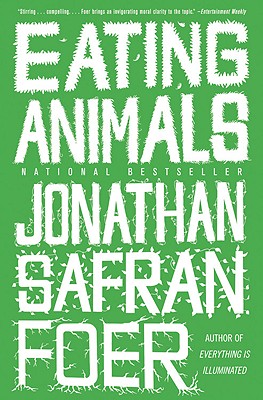
Book: Eating Animals by Jonathan Safran Foer
→ Buy USED on Better World Books from $6.48 (affiliate)
→ Buy NEW on Bookshop from $16.55 (affiliate)
→ Find at your local library
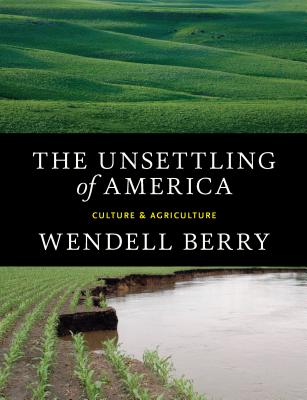
Book: The Unsettling of America: Culture & Agriculture by Wendell Berry
→ Buy USED on Better World Books (affiliate)
→ Buy NEW on Bookshop from $15.59 (affiliate)
→ Find at your local library

Film: Snowpiercer from Bong Joon Ho
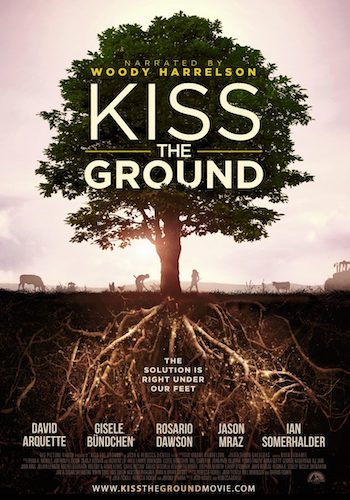
Documentary: Kiss the Ground from Josh and Rebecca Tickell
